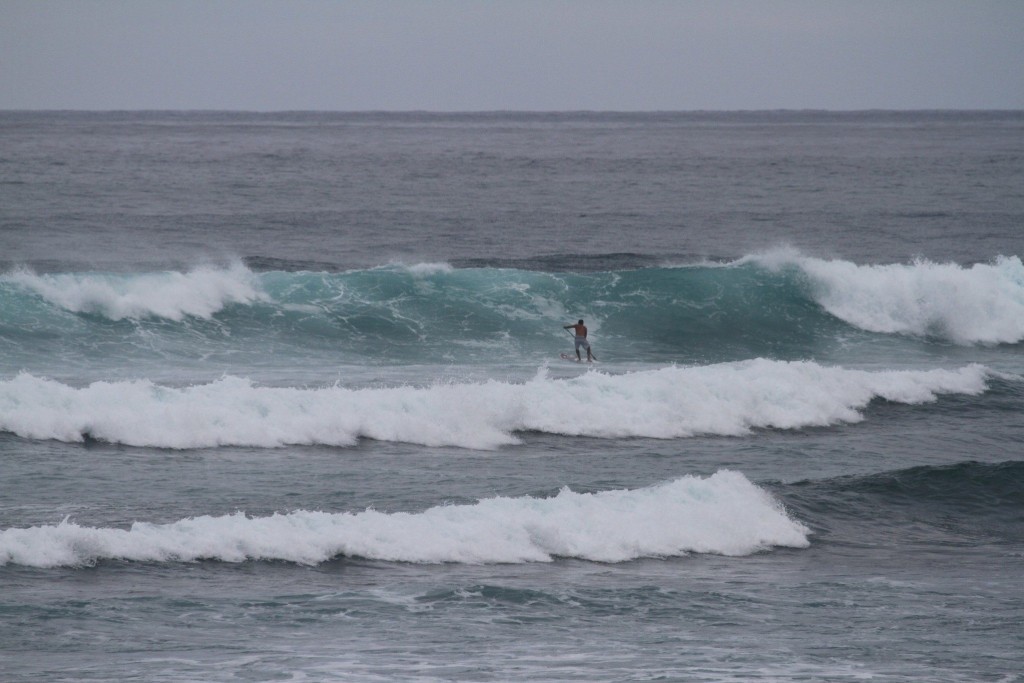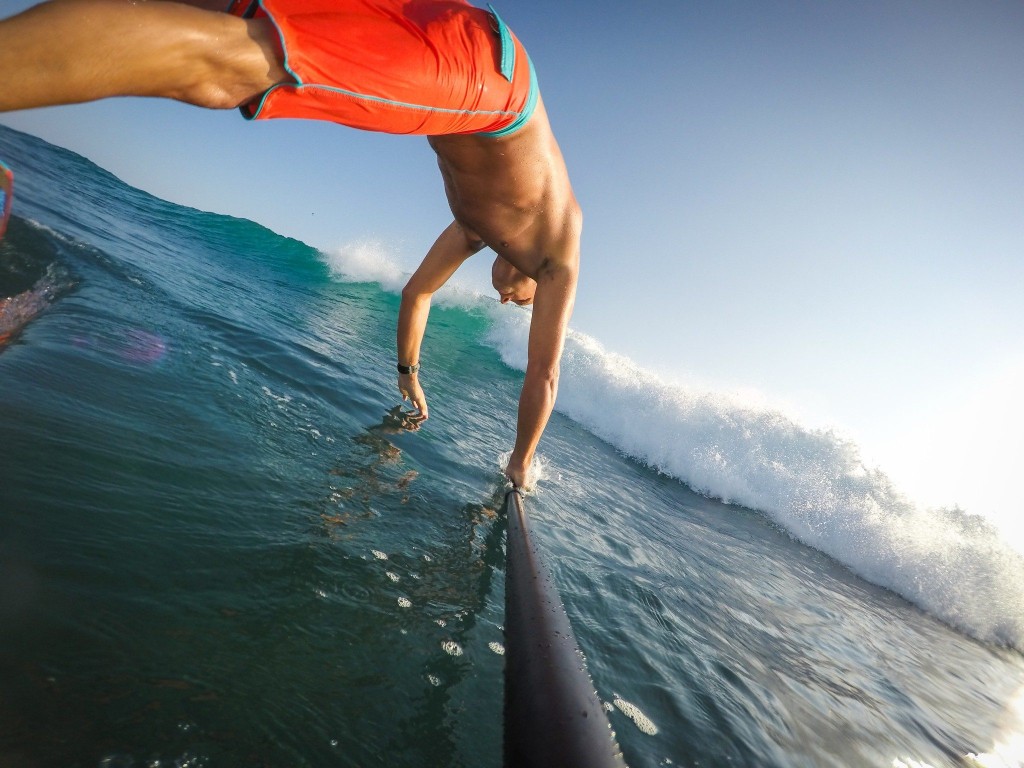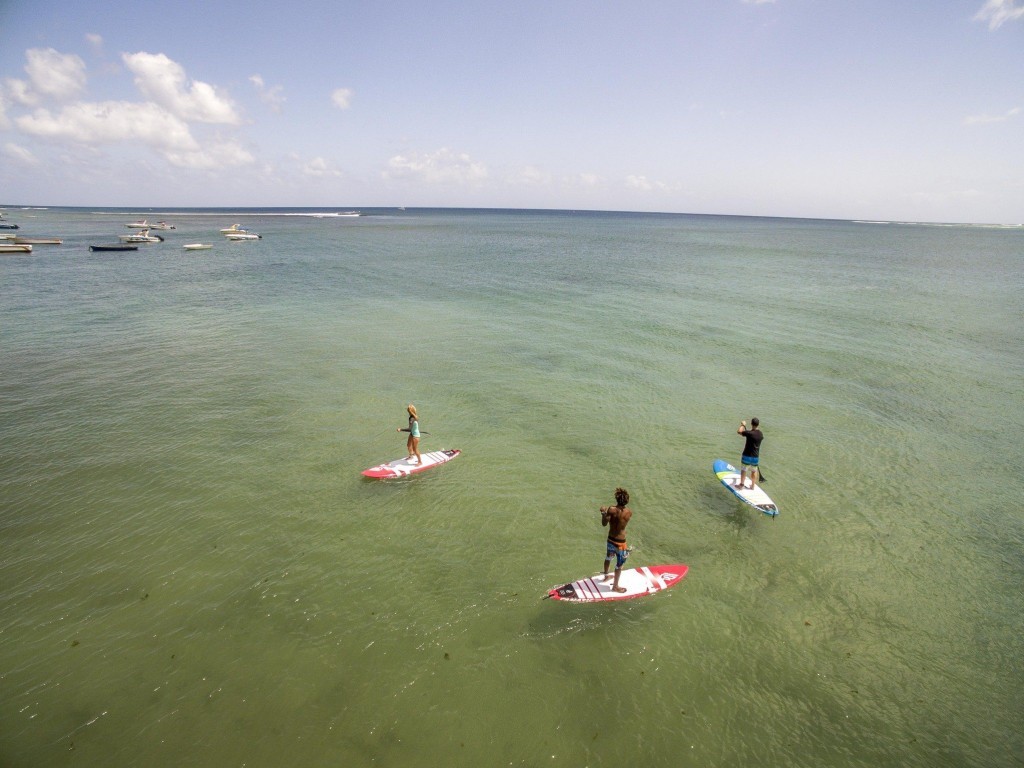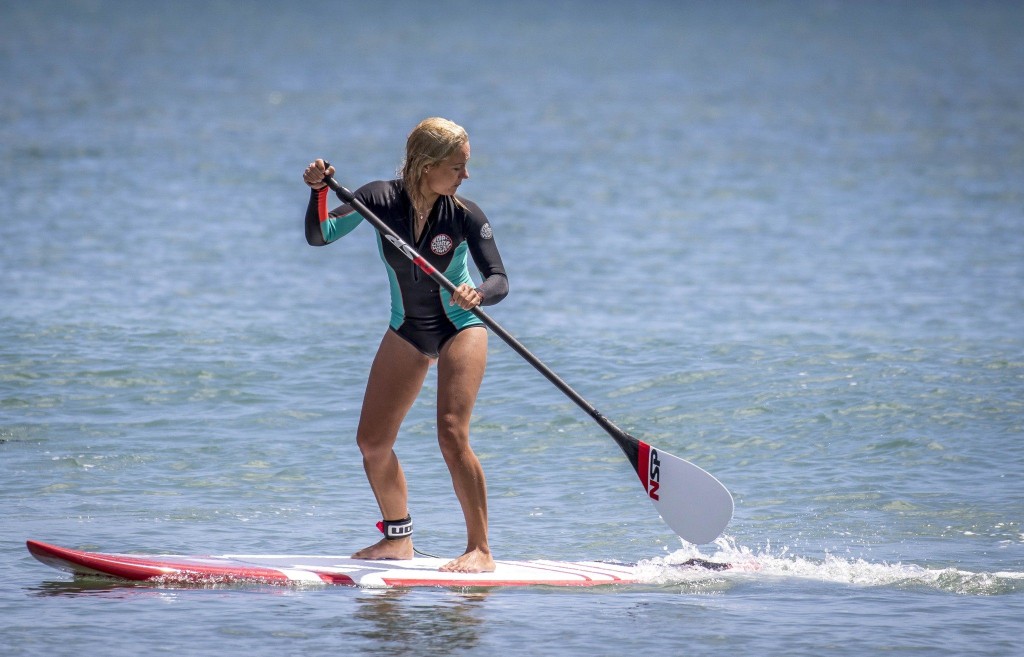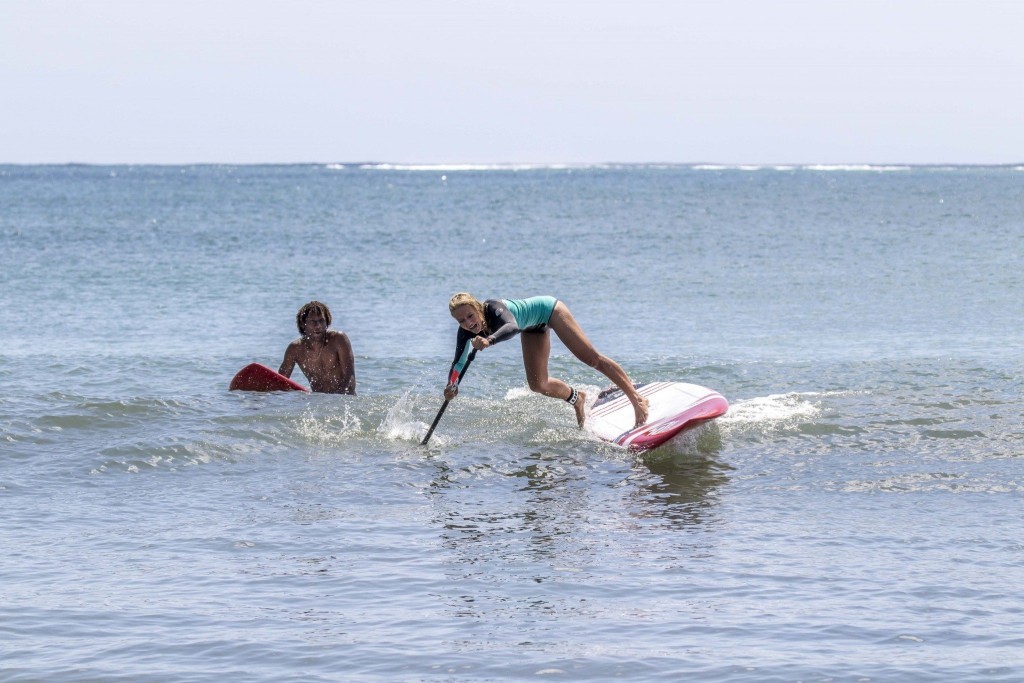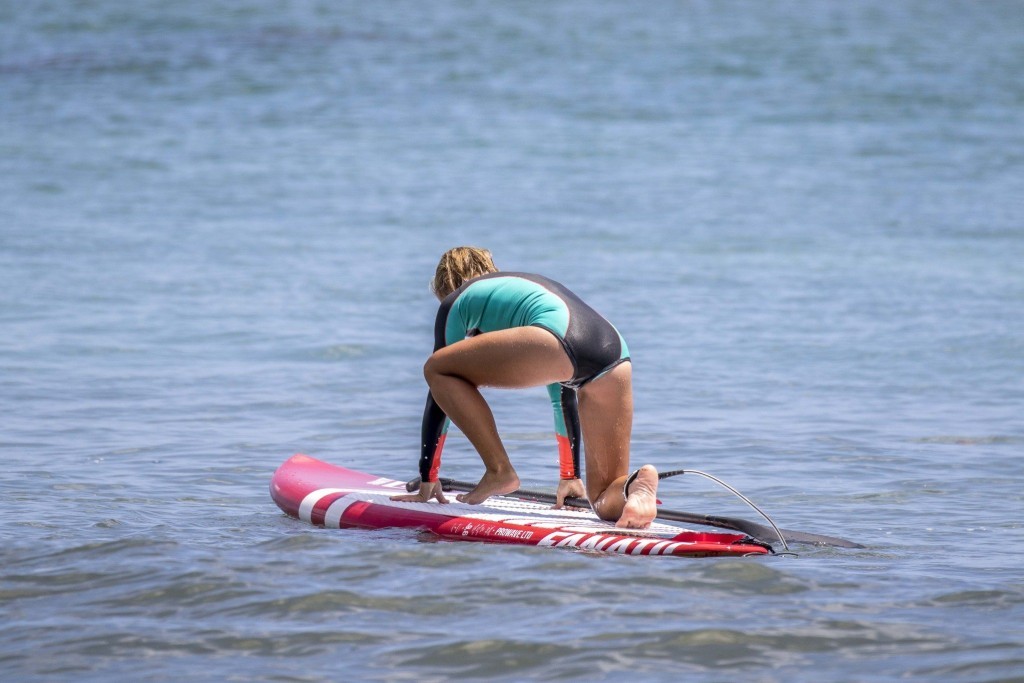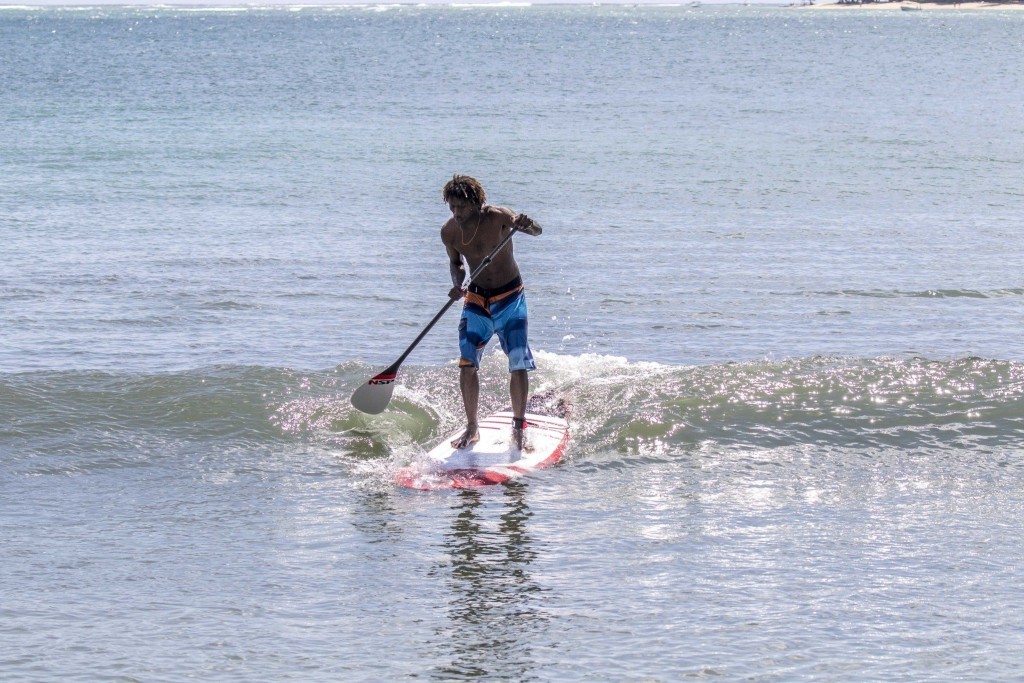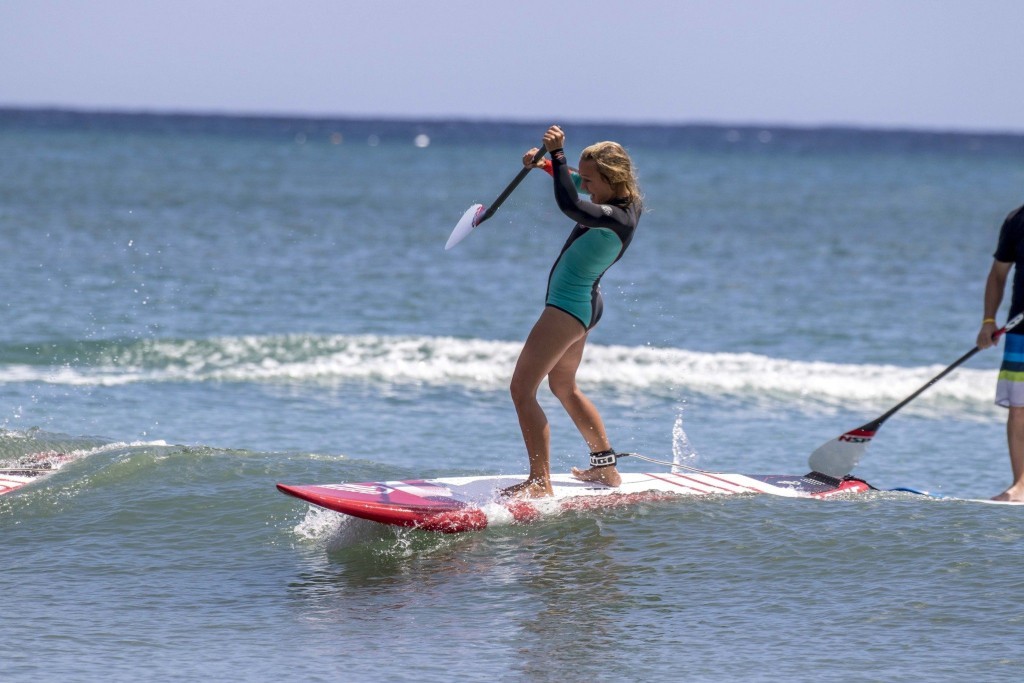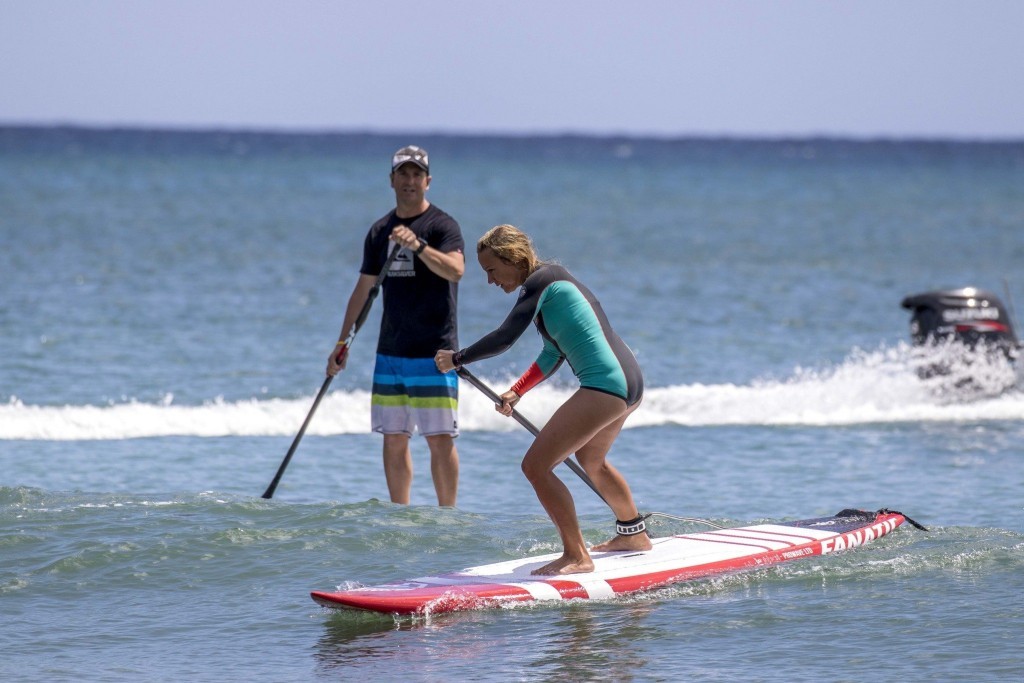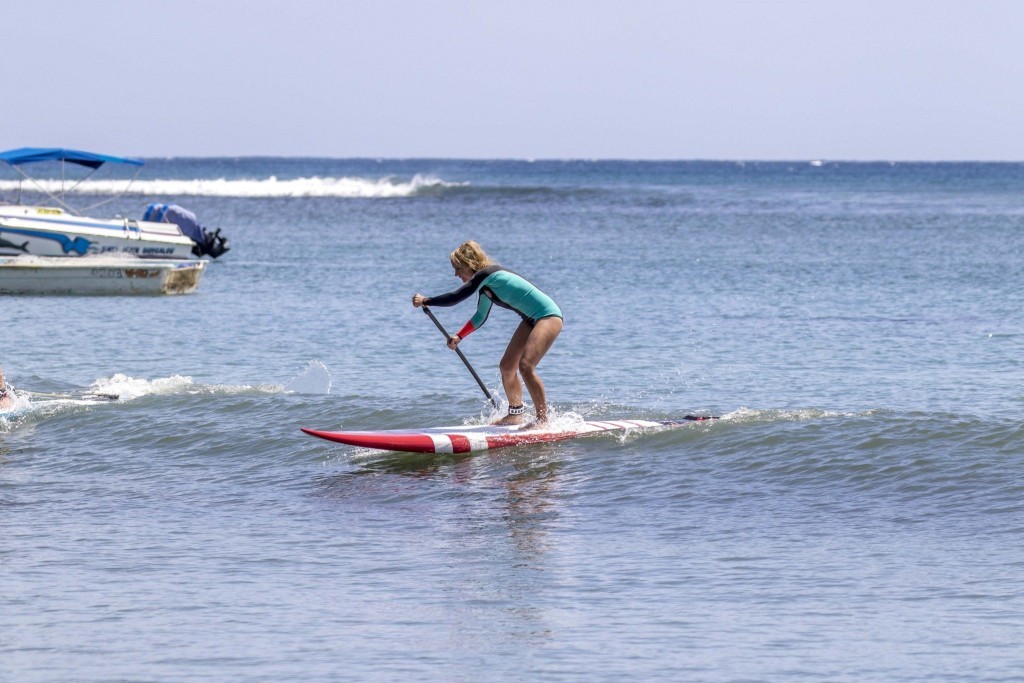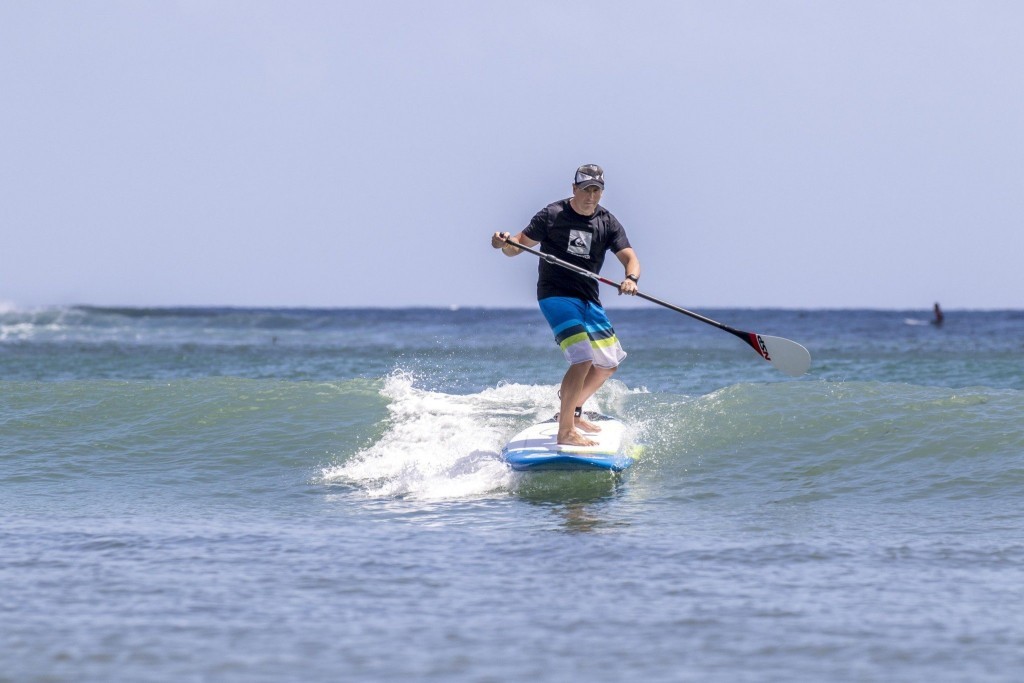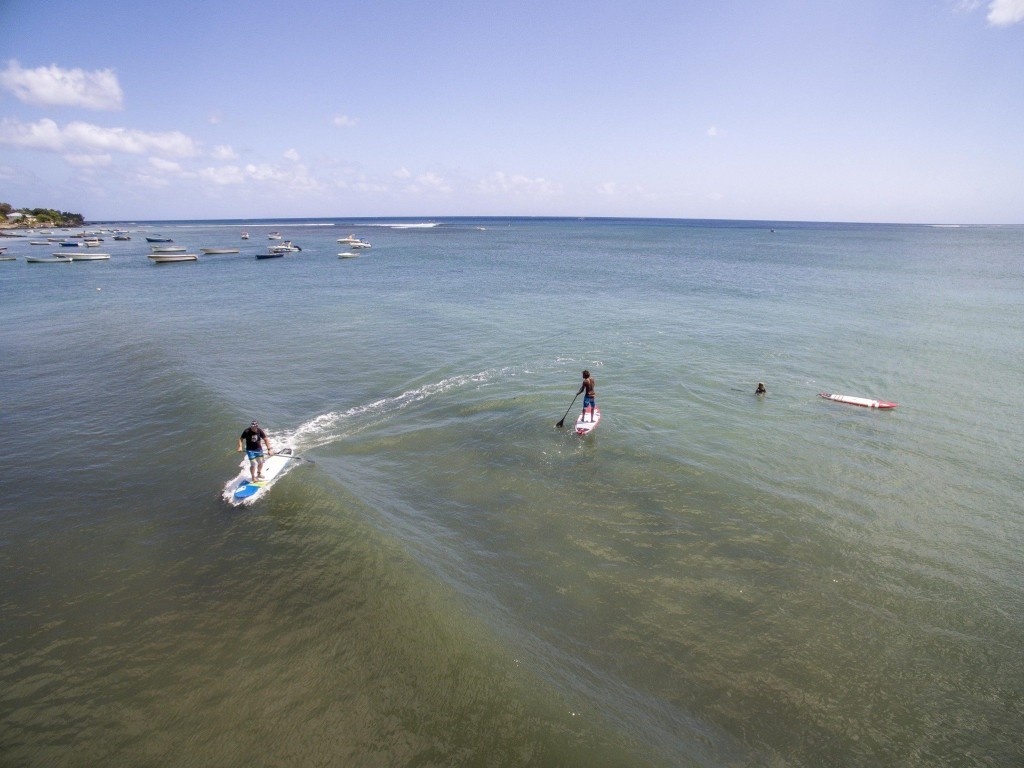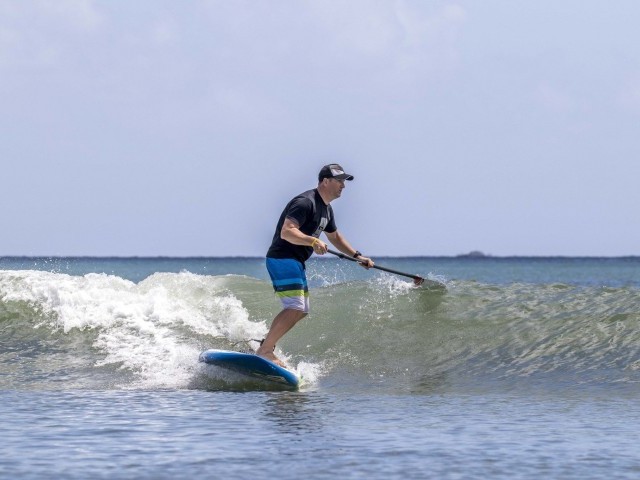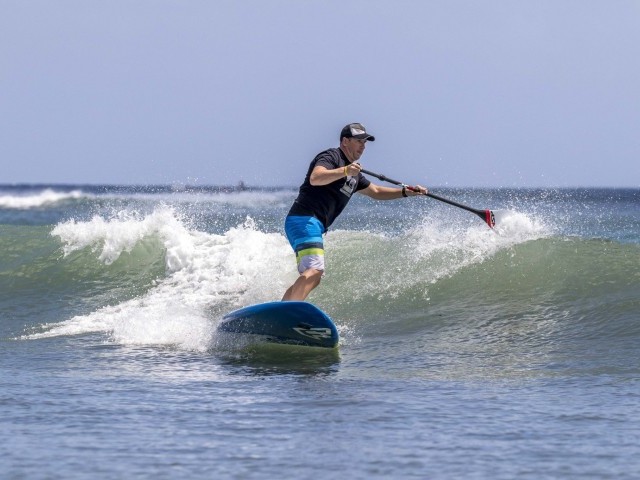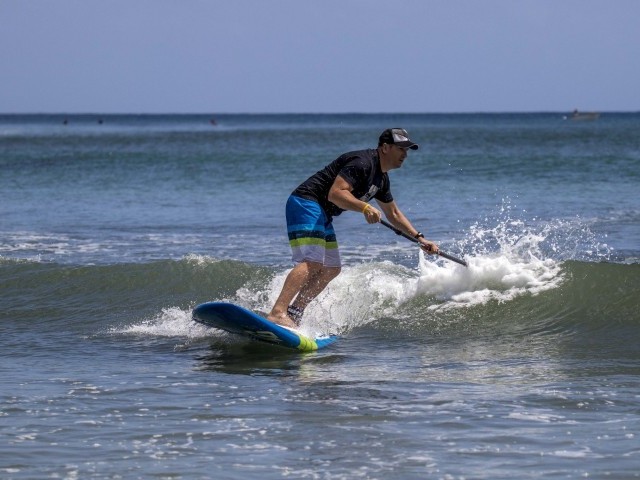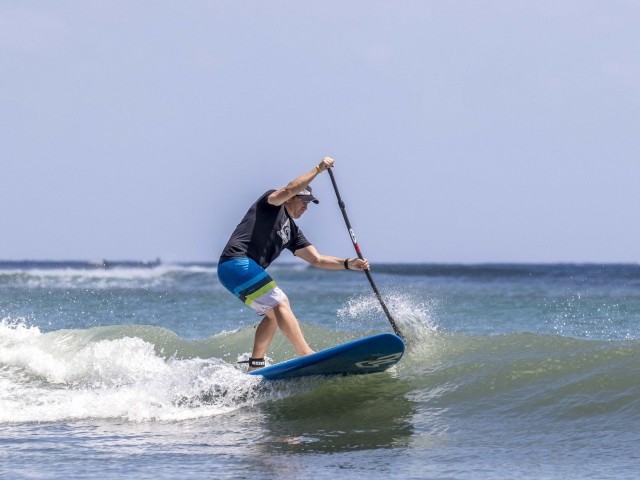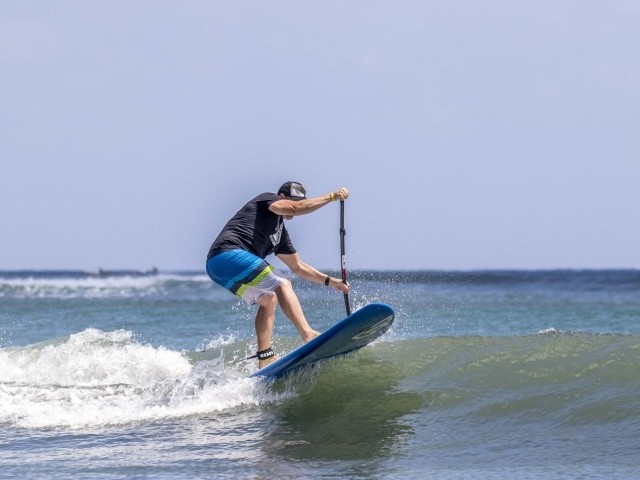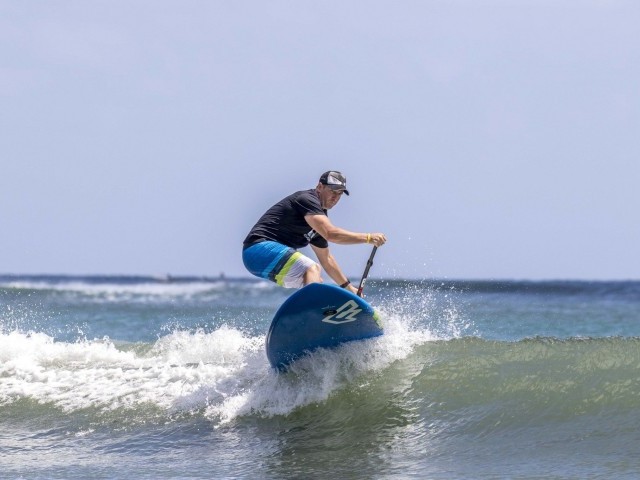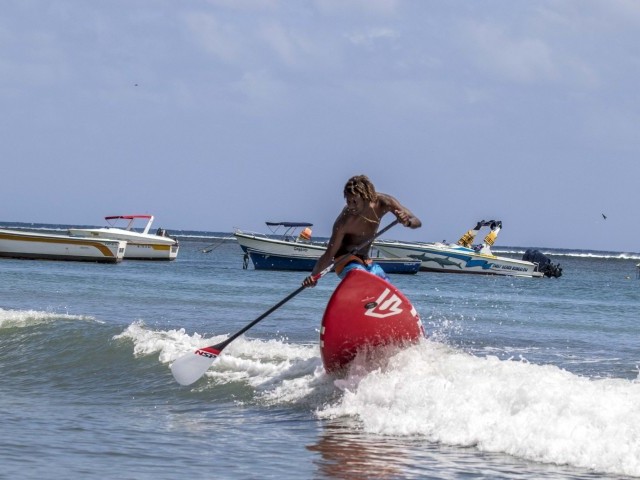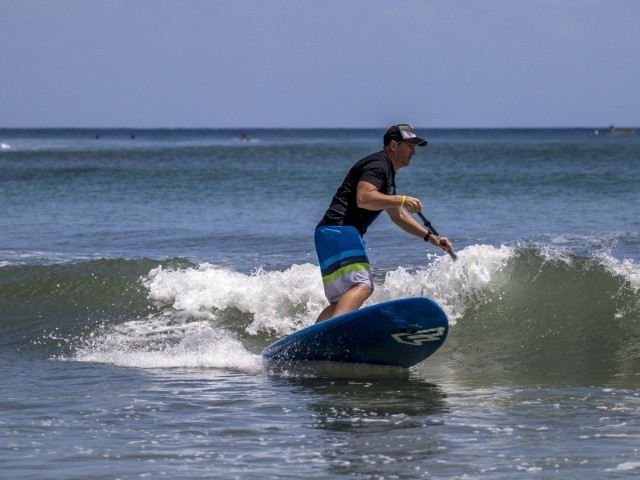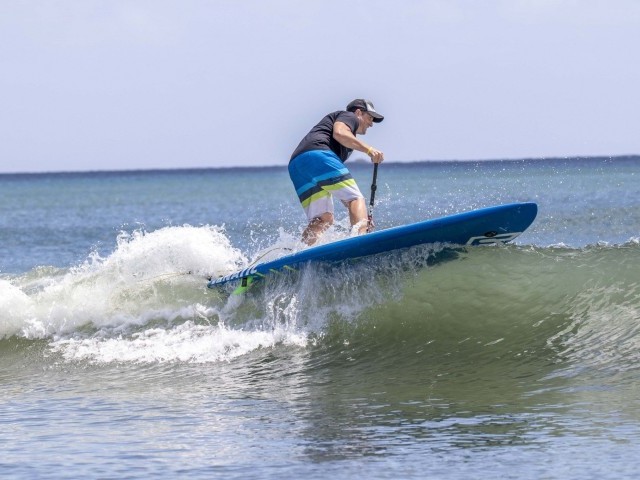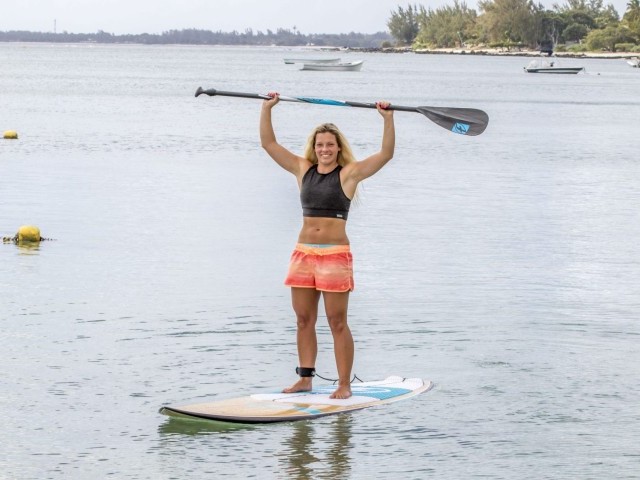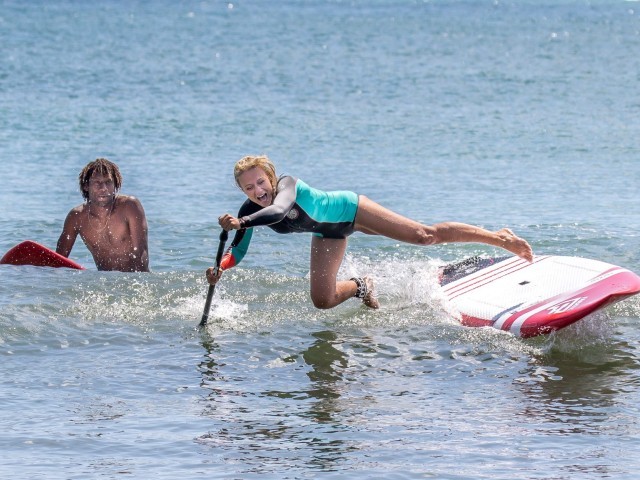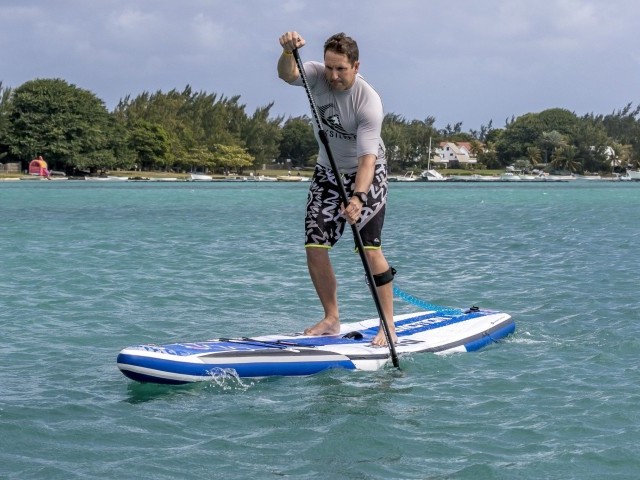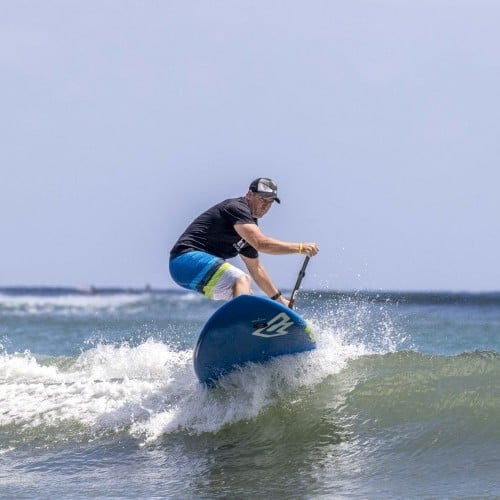
Bumps, Curves and Rites of Passage – Part 2
Technique / Beginner
Introduction
Welcome to Part 2 of our introduction to Wave Riding! In part one Bryn James talked you through the fundamentals to learn before you hit the water. There is a lot of safety, awareness of other water users and many other factors to consider before you first get wet. If you've not read Part 1 yet CLICK HERE to get the basics dialled in before you venture on with Part 2!
Paddling Out
Now that we have covered a basic introduction to the various SUP wave board types and equipment to choose, it's time to get wet! By now you should have been for enough surf lessons or have the experience to feel confident to enter the water ensuring you have plenty of space around you to have your first go at SUP wave riding. You should also understand how to count waves in a set and time the lulls in the sets so you can start your paddle out.
For your added protection we suggest the use of an impact vest and a surf helmet for your first outing if you can get access to the gear, or at least a wetsuit, if conditions are not too warm, as this will provide your body with an additional layer of potential impact protection.
We are firmly suggesting you starting on a small sunny day, 1 – 3ft running waves, as opposed to 5ft + rearing and dumping, close out conditions. Pick a day when the wind is light or non-existent, on shore or cross-shore, are preferable. Always make use of a SUP specific wave leash, preferably one with an anti-recoil cord that runs through the centre of the leash preventing the leash from stretching and firing your board back in your direction post wipe-out. This also limits the potential for leash stretch and its impact on other water users.
To begin with, you can make use of your self-rescue position, lie flat on your board with the blade under your chest. Utilising your arms to paddle out over the chop and small waves or you can remain on your knees, the lowered centre of gravity, will hugely improve your stability and chances of getting out. If you are comfortable and can maintain your balance with an efficient paddle stroke, elect to stay on your feet.
To negotiate waves on the paddle out, focus on keeping the nose of the board straight into the oncoming waves, and steady yourself by absorbing the impact of the wave by bending your knees. In most instances, with small surf, the nose of the board will simply “punch” through the wave and with little resistance as it washes over the board. For slightly larger waves, 3 – 5ft, it is advisable to change your stance from square stance, feet side-by-side, to surf stance, or staggered stance. Place one foot slightly in front of the other, to prevent the board from being forced up into your face from the leverage impact energy transferred from the oncoming wave.
Commit wholeheartedly to the paddle and rapidly make your way through the shore-break, paddling cleanly and hard to make sure you make it out the back before the next wave set.
This is the position that you would have covered in surf school where you able to comfortably sit and wait for the oncoming swell before it rears up and forms a wave. It is very crucial that you are positioned in the correct spot, more so on a SUP than a surfboard. A surfboard can be “duck-dived” under an on-coming wave whereas a SUP that carries significantly more volume isn’t so easily manoeuvred in a rushed situation. This is why timing the sets and paddling at the right moment is so much more important on a SUP.
The Lineup
As with big wave surfing, being in the right place and knowing that you are in the right place is just as important when SUP surfing. From your vantage position, you can learn to make use of triangulating your position by “lining-up” visual markers and indicators on the shoreline to ensure that you remain in the right spot.
This is an excellent exercise to practice and master early, even in small waves, as it can only benefit you, and the safety of others in the long run as you progress. In terms of wave positioning for learning, it is best to be positioned on the shoulder, where the wave shape gently rears up, and peels then runs to the right or left. With a SUP board, you can catch the wave much earlier so there is no need to be positioned in the critical section of the break getting worked every time a set rears its head.
Observing The Swell
In addition to the lineup, learning to read the oncoming swell as it gradually approaches the break is crucial. It generally takes a little longer to get yourself into position on a SUP as opposed to a surfboard. By observing the incoming swell and selecting your wave early, you will have the necessary time to get yourself into position to catch the wave. It is fair to say that 90% of the time if this step is rushed or forced, you will inevitably fall or not be able to catch the wave at all so it is paramount that you provide yourself the necessary time to do so.
The benefit of a SUP is your elevated position, in comparison to lying down on a body board of surfboard. This offers a distinct advantage in being able to observe the swell approaching from a long distance and it is quite easy to identify the wave sets approaching as bumps on the horizon gradually developing into waves. If you are surfing in a bay, watch the seaward points as these are going to encounter the breaking waves first as they enter the bay. This will help you to discern the larger waves of the set should you need to paddle into deeper water to avoid them.
Catching The Wave
The best way to catch a wave is to position your board parallel to the waves as they approach. If you board is pointing directly at the shore you will be facing the beach and won't be able to see the wave as it reaches you unless you look over your shoulder which might put you off balance. As paddlers, we usually have a dominant side which we paddle on and a preferred foot forward stance.
For me, that's my left foot forward, which is known as a "regular" stance and paddling on my right side. That's my strongest, most powerful and balanced stance. By positioning my board sideways in the lineup, I can easily paddle out of the way of any incoming swell in a diagonal direction, out and sideways away from the break. I can also keep an eye on any incoming swell too. Discover which stance and paddle side suits you best practice positioning your board accordingly.
When you see the wave you want to take off on you can then paddle on your dominant, more preferred side with your feet already slightly staggered. This means if you time it right you don't need to switch your paddle but instead can continue paddling on the same side as the board turns and faces the shore and the wave starts to carry the board. By starting with a slightly staggered stance when the speed increases you will have better fore and aft balance to control it.
If you start off facing pointing the board to the beach it is likely you will end up at an angle to the wave when it catches you, which is not ideal. Practice and timing will be needed to ensure you perfect this manoeuvre, however, once you have mastered it the choice of waves will be yours. Longer straighter boards will take longer to turn, shorter boards will take less time, so perfect the timings and even practice this quarter turn move on flat water, imagining the waves so you have it dialled!
Timing is Everything
As the wave approaches, you will start to feel the wave under the tail of the board, through your feet. The board will rise from the rear as the wave head pushes you forward. The objective is to time your power paddle strokes to coincide at the critical moment so that your forward speed matches that of the wave. Also, a well-timed shift of your upper body from a vertical position to a slightly forward one as the wave shifts from the tail to the mid-section of the board will certainly help to ensure an extra boost so that you catch the wave with added momentum.
Stepping Back
In most cases, individuals new to wave riding at so excited by the sensation of being driven forward by the waves energy that they become transfixed in the moment and forget to step backwards on the board. The result is a sudden nose-dive of the board usually followed by a not-so-graceful dismount and healthy face plant! This can be overcome by stepping backwards along the centre line of the board once you feel the wave energy begin to carry you.
Note that the amount of stepping will be dependent on both the board size and wave size to elevate the nose of the board to prevent it digging in. Experienced riders have turned the simple process of stepping into a true art form! They effortlessly step backwards and forwards hanging five or hanging ten toes on the nose of the board, implementing cross-stepping and adding flair.
If you are nose diving or stalling the board and wiping out over the front, simply apply more pressure by stepping further back. Conversely, if you step too far to the tail and stall the board, the equivalent to putting on the breaks, and kicking out the back of the wave. To remedy this, do not step so far back. Given the fact that the timing will change depending on both conditions and the size of board you are riding, practise will make perfect. You will learn to naturally perform this manoeuvre automatically without even having to think about it and break it down into a logical sequence ever again.
Wave Riding
Now that you have managed to catch the wave successfully, you'll want to maximise the length of your ride. You need to focus your attention on the wall of the wave. This is the clean section of peeling wave just ahead of the white-water headed in the direction in which the wave is breaking.
This is the critical section of the wave that stores the dynamic energy, which you aim to harness to generate and maintain your forward speed and momentum extend your ride and open up the possibilities for linking turns. With regards to board control the application of front foot pressure, in combination with a slightly forward stance; the mid to front section of your deck pad, is going to aid in accelerating the board forward but will make turning challenging.
You need to find the balance between board speed and manoeuvrability. As you get better, you’ll find yourself almost dancing a jig on the board, especially on larger and wider SUP's. Getting your weight in the right place is crucial to maximise not only the turns but also the speed needed to stay on the wave.
Bottom Turn
We will cover the basics of the bottom turn first as a result of its important role played in catching medium to larger waves. The larger the wave, the faster it breaks and peels down the line. As a result, the bottom becomes very crucial in allowing you to concentrate your forward speed, gained initially from catching the wave, and paired with the added drive and acceleration from “pushing” off the lower face of the wave and driving down the line.
It is comparable with skateboarding and snowboarding in a half pipe/superpipe by initially compressing your knees and then pushing back down to your feet shifting emphasis from your heel-side to toe-side to ensure the appropriate rail pressure as you enter the lower section of the wall to generate additional speed for the next section. To aid with balance, it is commonplace to draw your paddle across the “wall side” of the wave as this provides additional balance support and allows for you to maintain position higher up on the wave wall.
Wall positioning is an important concept to understand, as it will ultimately influence the length of your ride. To conserve your energy you ideally want to position yourself on the mid section of the wall as this will allow you to drive your board towards the bottom to generate more acceleration and speed, on demand when you need it.
Top Turn
Having mastered the takeoff and bottom turn, finding yourself carrying good speed down the line, you will progress onto linking top turns. The combination of top and bottom turns will ultimately increase the length of your ride by maintaining your position in the dynamic zone of the wave. This will ensure that you remain in the clean, open face section of the wave, neither running too far ahead of the breaking wave or ending up in the white-water behind you.
For your top turn, you will need to be carrying enough speed to drive off the bottom of the wave and draw back towards the rising face in front of you. Passing the mid-wall section of the wave you will begin the process of shifting your foot pressure from toe to heel to drive the appropriate rail pressure to carve your top turn. The parallels to snowboarding are unmistakable to that of making a turn on a groomed run.
It is not easy at very slow speeds to encourage a snowboard onto its rails. However, with the appropriate amount of forward momentum it becomes effortless to shift from toe-side pressure to heel-side pressure. Driving the energy from your forward momentum through your hips, legs and feet into the bindings and delivered straight to the rail. Concentrating the force down through the rear, inside rail, while using your upper body and arms to maintain the necessary balance.
By making use of the same technique, your SUP will drive off the wave bottom carrying the collective speed, climbing the wall of the wave whereby you shift your foot pressure in preparation to carve your turn off the top of the wave. Once again you can make good use of your paddle by planting it in the top of the wave to accentuate the drive of the top and provide balance and added stability.
Kicking Out
By stepping to the rear of the board, on a small wave, and remaining there for a slightly extended period will slow your speed to the point where the wave will continue to accelerate past you and leave you behind. To kick out of a wave, you can either make use of this technique on a small wave or use an exaggerated bottom turn which draws your board back up the wave face and over the slowly forming lip.
Once again practise and experience will help you to verify the timing and apply the necessary rail pressure required to exit the wave. Once out the back, be cognisant to the remaining number of waves in the set, other riders in the area surfing towards you and carefully negotiate the paddle back from mid-break to backline position. Alternatively, should you be paddling in a location that has a shore break, you need to kick out of the wave well before it rears up for its final crash on the beach, or you may find yourself surfing an “unfortunate short-board” for your next session!
The Final Word
I realise that it seems as though we are harping on about safety a great deal. There is a very rational explanation for this, and it is certainly not done unintentionally.
The very simple fact of the matter is that “globally” the concept of SUP’s in the surf zone is presenting a very albeit contentious threat, in the hand of inexperienced users, for many communities. The concerns are validated by the size, composites used, even though it’s quite difficult to comprehend the argument with inflatables, and actual incidents. However, it doesn’t take lots of intelligence to realise that our boards have the “potential” to present a danger to other surf users, as do the majority of all watercraft.
The rising concerns for the majority of us are well-founded as your regional beach authorities can ultimately have the final word and initiate bans on SUP’s. Prohibiting us from making use of the ocean and spending time doing what we love. Granted, this is the worst possible case scenario, but it can be so very easily avoided if we just take a little time to reflect on what we are about to do. Consider our experience level, the conditions that are presented and be conscientious of the other water users; it isn’t a lot to ask.
At the end of the day, adhering to the basics, knowing your limitations, applying common sense, maintaining a cool head and initiating a mutual respect will go a very long way in forging a healthy reputation. Greatly benefitting our lifestyle choice, collectively, in the long run. Waves add another facet to a fantastic palette of options that we have at our disposal as stand-up paddle boarders. The waves are there to be respected, shared and enjoyed by all who venture out to challenge themselves and revel in the unique sense of self-achievement that a truly meaningful session delivers.
Paddle responsibly and enjoy the waves!
Until next time - swell, sunshine and smiles to you all!
Related
By Bryn James
Bryn is a highly respected waterman who is very popular amongst his peers. Having been the competition director for the longest running multi sports events (Jeep Apparel South Coast Carnival in South Africa), he continues to be a fierce competitor in professional SUP and Kitesurfing events, spanning 15 years. His affinity for the sea has no bounds and he is perpetually motivated to share positive ocean experiences with everyone he meets!




